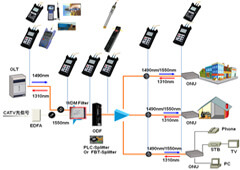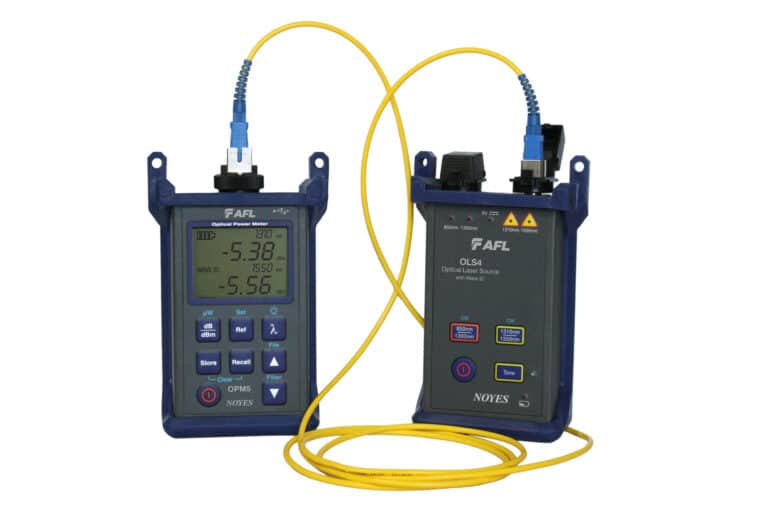Streamline efficiency in production with smart fibre testing equipment
Wiki Article
Exploring Advanced Techniques in Fiber Measurement and Their Market Effect
In today's fabric market, accurate fiber measurement is vital for optimizing manufacturing processes and conference sustainability goals. With the rise of ingenious imaging and logical devices, you can acquire much deeper understandings right into fiber framework and make-up. This shift not only improves performance yet likewise aligns with market criteria. As these sophisticated methods evolve, you could ask yourself just how they can additionally change making techniques and effect the future of textiles.The Significance of Accurate Fiber Measurement in Fabric Manufacturing

Ingenious Imaging Technologies for Fiber Analysis
When it pertains to fiber evaluation, ingenious imaging technologies are game changers. High-resolution microscopy techniques and spectroscopic analysis techniques supply you with in-depth insights into fiber framework and make-up. These innovations not just improve accuracy yet likewise streamline your measurement processes.High-Resolution Microscopy Techniques
High-resolution microscopy strategies have actually revolutionized fiber evaluation, enabling scientists to picture fibers at unmatched levels of detail. With techniques like scanning electron microscopy (SEM) and transmission electron microscopy (TEM), you can observe fiber morphology, surface area attributes, and cross-sections with amazing clearness. These methods allow you to compare various fiber kinds and analyze their architectural honesty. You'll locate that high-resolution imaging helps recognize problems, incorporations, and other crucial features that can influence material efficiency. Moreover, advancements in digital imaging software application have boosted picture processing, making it easier to examine and translate information. By taking on these cutting-edge methods, you can drive better precision in fiber measurement and add to developments in numerous sectors, from textiles to compounds.Spectroscopic Evaluation Approaches
Spectroscopic evaluation methods have actually become powerful tools for fiber characterization, offering insights that complement high-resolution microscopy. You can use techniques like infrared (IR) spectroscopy, which aids recognize the chemical structure of fibers by measuring molecular vibrations. Raman spectroscopy uses an additional layer of information, permitting you to assess molecular structures with spreading of monochromatic light. These approaches not only enhance your understanding of fiber buildings but also allow the detection of pollutants and structural variations. By incorporating spectroscopic methods with conventional microscopy, you gain an extra considerable view of fibers' physical and chemical characteristics, enhancing your research study precision. Inevitably, these technologies can significantly affect material selection and quality assurance in numerous markets.Advanced Analytical Equipment and Their Applications
As you discover the domain of fiber dimension, you'll find that innovative logical devices play a crucial function in enhancing precision and performance. Methods like high-performance fluid chromatography (HPLC) and gas chromatography (GC) allow you to assess fiber make-up with impressive precision. These devices enable you to identify specific elements and impurities, ensuring quality assurance in your products.Additionally, making use of scanning electron microscopy (SEM) provides you an in-depth sight of fiber structure, helping you understand just how various treatments affect efficiency. Modern software application also enhances information analysis, making it much easier to interpret complex outcomes and collaborate across teams.
Impact of Fiber Measurement on Manufacturing Performance
While specific fiber dimension might look like a little detail, it substantially impacts production effectiveness in the fabric industry. When you purchase accurate fiber dimension techniques, you can enhance raw product usage and minimize waste. This causes much better resource allocation, allowing you to generate high-quality textiles without excessive using resources.By understanding fiber characteristics, you can tailor production procedures to specific materials, boosting your operations and decreasing downtime. For instance, knowing the exact tensile strength of fibers lets you change machinery setups for optimum performance. This not just speeds up production yet likewise ensures consistent item quality.Moreover, precise fiber measurement helps you recognize concerns early in the assembly line, protecting against expensive reworks and delays (fiber measurement). Overall, implementing sophisticated fiber measurement techniques simplifies operations, improves performance, and ultimately enhances productivity. In today's open market, every detail counts, and exact fiber dimension is a game-changerSustainability Considerations in Fiber Assessment Techniques
When you assess fiber, it's important to ponder lasting practices that can decrease environmental influence. Making use of environmentally friendly measurement methods and reducing waste in your assessments can substantially boost your overall sustainability. In addition, incorporating lifecycle analysis into your techniques can offer a clearer photo of your fiber's environmental impact.Eco-Friendly Measurement Approaches
Taking into consideration the expanding demand for sustainability in numerous sectors, adopting green dimension approaches for fiber evaluation has actually ended up being necessary. You can begin by utilizing safe solvents and eco-friendly products in your testing procedures. These alternatives not only decrease environmental impact however additionally enhance safety for your group. Applying digital measurement methods can further decrease waste, as they typically need less physical examples and sources. Additionally, leveraging cutting-edge modern technologies like near-infrared spectroscopy can yield accurate outcomes without damaging chemicals. By choosing these greener techniques, you add to a much more lasting future while maintaining high criteria in fiber quality. Inevitably, incorporating environment-friendly methods into your fiber analysis not only straightens with consumer worths however additionally increases your brand name's reputation.Minimizing Waste in Evaluation
To successfully lower waste in fiber evaluation, you can apply methods that simplify your screening processes and minimize source usage. Begin by optimizing sample sizes; using smaller examples can produce precise results while preserving materials. Next off, buy multifunctional devices that permits numerous tests without needing multiple devices, decreasing energy and resource usage. You ought to also take into consideration adopting digital tools for information collection and analysis, which can reduce down on paper waste and boost performance. Frequently educating your team on lasting practices ensures everyone's aboard with waste reduction goals. Ultimately, working together with vendors who prioritize sustainability can even more boost your efforts, permitting you to analyze fibers while maintaining a commitment to ecological duty.Lifecycle Analysis Assimilation
Incorporating lifecycle analysis (LCA) into fiber assessment strategies can greatly improve sustainability efforts. By analyzing the environmental impacts of fibers from production to disposal, you can identify locations for renovation. This method helps you comprehend source usage, energy usage, and waste generation throughout the fiber's life.When you integrate LCA, you're not just determining fiber features; you're likewise considering the environmental impact. This all natural view allows you to make educated choices that focus on sustainability. You could choose fibers that need fewer resources or have a reduced carbon effect. Ultimately, LCA empowers you to optimize procedures, reduce waste, and advertise ecologically pleasant selections in fiber production, aligning your techniques with global sustainability goals.
Sector Requirements and Regulations Forming Fiber Measurement
As the demand for premium fiber products expands, understanding the sector criteria and policies that control fiber measurement ends up being necessary. These standards assure consistency, accuracy, and security in the measurement process, which eventually influences fibre testing equipment item quality. Organizations like ASTM International and ISO stated standards that makers should follow, covering numerous facets such as fiber recognition, stamina testing, and wetness material analysis.
Future Patterns in Fiber Measurement and Fabric Production
Exactly how will advancements in innovation improve fiber measurement and textile production? You'll see a shift toward automation and real-time information analysis, boosting precision and effectiveness. Smart sensing units will certainly check fiber buildings continually, permitting for prompt changes in production. This implies you can expect higher quality materials with less waste.Moreover, AI and device knowing will anticipate fads in customer preferences, enabling makers to adapt quickly. optical fibre diameter analyzer. By integrating blockchain innovation, you'll have far better traceability of materials, guaranteeing sustainability and honest sourcing.Virtual reality and augmented truth will certainly contribute as well, using immersive training experiences for employees on fiber handling and production processes.As you embrace these changes, the textile market will transform into a much more receptive, sustainable, and cutting-edge industry, establishing new standards for top quality and efficiency. The future of fiber measurement and fabric production is brilliant, and it's time to hop on boardOften Asked Questions
What Are one of the most Typical Fiber Kind Measured in the Market?
In the sector, you'll usually come across natural fibers like cotton and woollen, along with synthetic alternatives such as polyester and nylon. Each type has unique homes, influencing their measurement and application in different items.Exactly How Do Fiber Dimensions Affect Consumer Item Top Quality?
Fiber measurements straight influence consumer item high quality by guaranteeing uniformity, resilience, and performance. When you understand these metrics, you can make educated selections, leading to improved contentment and far better total experiences with the items you utilize.What Training Is Needed for Fiber Dimension Technicians?
To come to be a fiber dimension professional, you'll need specific training in textile science, dimension methods, and tools operation. Hands-on experience and accreditations can enhance your abilities, making you skilled in accurate fiber analysis and quality control.Are There Any Certifications for Fiber Dimension Professionals?
Yes, there are accreditations for fiber measurement specialists. You can seek alternatives like the Licensed Optical Fiber Professional (CFOT) or various industry-specific qualifications that improve your experience and integrity in fiber measurement and testing.Just How Can Small Companies Carry Out Fiber Measurement Techniques Successfully?
You can execute fiber dimension methods properly by purchasing cost effective tools, training your team, and developing clear procedures. Team up with industry experts and continually improve your procedures to improve accuracy and effectiveness with time.Report this wiki page